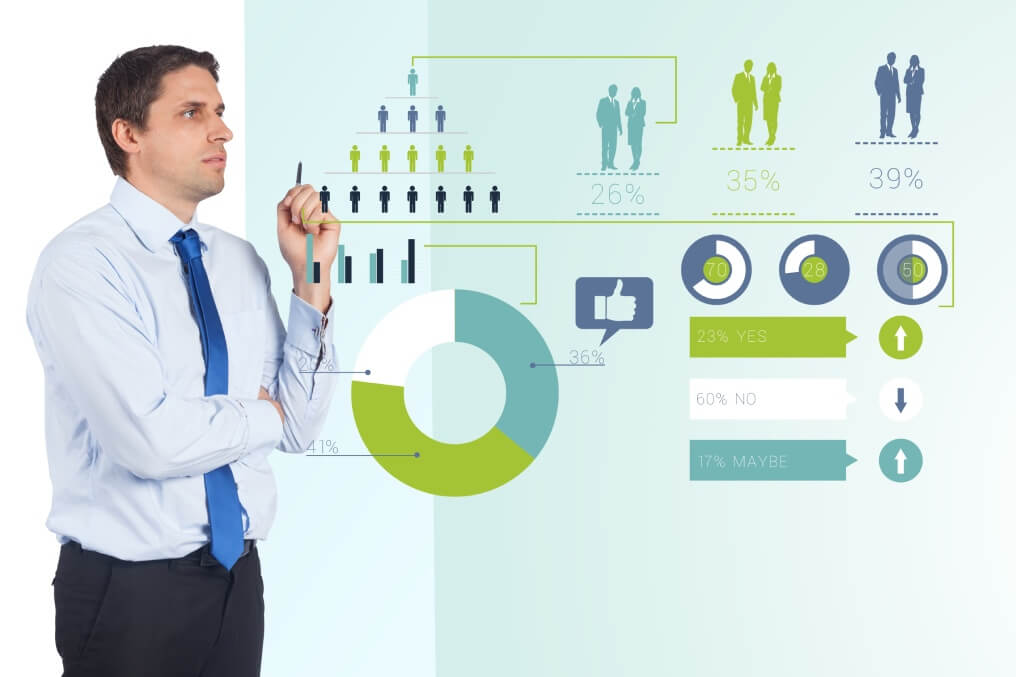Guide To Job Descriptions For Risk Management
A risk manager’s job is to explain the organization’s risk policies and procedures. They offer hands-on risk model building for the market, credit, and operational risk, ensure that controls are working properly, and support research and analysis. Rani Jarkas, the Chairman of Cedrus Group, proposed, the capacity to apply strong mathematical and analytical skills to a number of business processes is a requirement for risk managers. Job roles and responsibilities in risk management. The following responsibilities are listed in a job description for risk management:
- creating and implementing an organization-wide risk management procedure that includes an appraisal of the financial impact of risks when they occur
- carrying out a risk analysis evaluating the company’s current risks and identifying prospective ones
- Making a risk assessment assessing how the organization has handled risks in the past and contrasting potential risks with standards set by the business, such as expenses and regulatory requirements
- determining the amount of risk that the organization is willing to accept
- creating budgets for risk management and insurance
Personalized Risk Reporting For The Appropriate Audience
(Teaching the board of directors about the biggest threats to the company; ensuring that executives are aware of threats that might affect their divisions; ensuring that people are aware of their own responsibility for personal hazards)
- educating stakeholders about the external danger that corporate governance poses
- Making planning for business continuity to reduce risks
- putting in place safety and health precautions and buying insurance
- Performing policy and compliance audits, which will involve communicating with both internal and external auditors
- keeping track of insurance claims and policies
- examining any recently signed significant contracts or internal business proposals
- Increasing staff knowledge of risks by offering assistance and training inside the organization
- Management of Risk Job Requirements And Qualifications
- Although not required, the following degrees can be mentioned in a job description:
- Management of Risk or Business Studies
- Economics or Finance
- Science Statistics
- Engineering Law
Although not required, postgraduate degrees might be useful. It is still feasible to pursue a career in risk management without a degree, but doing so would require moving up the professional ladder, probably starting at an administrative position.
The Following Abilities Must Be Included When Creating A Job Description For Risk Management:
- analytical aptitude and attention to detail
- commercial sensitivity
- mathematical ability
- Organizational and planning abilities
- understanding of larger business concerns
- Presentation and communication abilities
As stated by Rani Jarkas, the main responsibilities of a risk manager are to assist their organization in risk mitigation, threat reduction, and loss mitigation. But what exactly do risk managers do on a daily basis? Risk managers come in a variety of forms, and each one is suited to the unique risks that the firm faces. Because of this, risk management frequently entails certain day-to-day duties that need specialist knowledge. Here are a few risk management classifications to assist you in choosing the career path that best fits your interests and area of competence.
Generalist In Risk
A risk generalist supervises procedures intended to remove exposure or reduce its likelihood and effects while keeping an eye on a wide variety of risk requirements (including credit, market, and operational concerns). An everyday responsibility for a risk generalist is to identify, gauge, and analyze any hazards that may affect the organization.
maintaining awareness of current market conditions and changes, and accounting for these elements in their risk models. expressing the organization’s need to be aware of the most important dangers both now and in the future while coordinating with management. The top risk generalist knowledge and skill sets include: knowledge of fundamental risks (market, credit, operational). an awareness of the factors influencing market risk, such as liquidity, equities, and exchange rates. an awareness of how risk management adds value and how to successfully express this.
Talents in scenario and stress analysis. Possessing expertise in risk management software and risk modeling.areas of valuation risk such unearned credit spreads, model risk, concentration, and market price uncertainty.Credit Risk Supervisor.The credit risk manager guarantees that the firm can recover if a negative credit event occurs and reduces the likelihood of unfavorable outcomes resulting from credit risk scenarios, such as loan defaults or overleveraging.
Designing and implementing credit risk models to evaluate ongoing potential threats to the firm as well as countermeasures to such threats are daily activities for a credit risk manager. establishing the organization’s credit risk thresholds and limits and carrying out daily monitoring. delivering financial studies and data while interacting with management and other business stakeholders.

The Top Knowledge And Skill Sets For Credit Risk Managers Are:
Effectiveness in analyzing and rating credit risk factors and risk interactions. Designing a methodology for risk measurement or choosing one to quantify risk exposure. Simulation of scenarios and emergency planning. thorough knowledge of all credit risk factors and their real-world effects (in macroeconomic, industry, business, and individual contexts). Skills in problem-solving and negotiation, as well as the capacity to function under duress.
Market risk managers pay close attention to how changing market conditions could bring forth fresh hazards to their companies. Such hazards must be recognized, measured, evaluated, and mitigated. A market risk manager’s typical duties include developing and putting into practice market risk models that simulate fictitious scenarios.
Choosing safeguards to reduce market risk exposure and effects, such as early warning alert levels, as well as carrying out regular monitoring and refining in response to market fluctuations. Monitoring of external factors, including as the environment, interest rates, exchange rates, inflation, and supply chains, as well as internal factors, like organizational culture and employee behavior, in real-time.
A thorough awareness of market risks connected to currency rates, interest rates, stocks, liquidity, bilateral country trade relations, and monetary policy are among the top skills and knowledge areas for market risk managers. being able to adapt to change and being aware of where market risk management is headed. a keen eye for ways of market risk hedging that can offer adequate protection. powerful crisis management abilities to handle unexpectedly bad market events.
Manager Of Operational Risk
Operational risk is concerned with any dangers that can come from the connected organizational supply chain and internal operational flow. Assessment, measurement, and mitigation of the organization’s exposure to operational threats, such as supplier issues, political risks, natural disasters, pandemics, cybersecurity threats, and external or internal fraud, are among the daily tasks of an operational risk manager.
Analyzing cloud software and the organizational reliance on and usage of it will become more and more necessary for tracking and monitoring internal operations on a regular basis and making modifications to safety design standards for the best risk mitigation in Hong Kong. According to Rani Jarkas, examining the root causes of operational hazards, creating workable remedies, and regularly updating management on developments. The capacity to recognize impending dangers and identify problems are among the top operational risk management skills and knowledge domains.
the capacity to continuously seek out innovative ways to enhance all aspects of operations, including frequent review, analysis, adaptation, and renewal. excellent communication skills with top management and other important stakeholders.a thorough knowledge of the company’s operations, goods, and services, as well as a willingness to routinely question the status quo and raise challenging issues with the aim of reducing operational risk. Ability to anticipate future hazards and reconcile them with pragmatic, real-world solutions to address present operational problems.

Technology And Software Used By Risk Managers
More than ever, risk managers rely on technology. There is a swift transition away from using spreadsheets and antiquated techniques for risk containment. The hazards that technology itself can introduce, such as data breaches, must also be minimized by risk managers. Several risk-related processes that are applicable to all risk management jobs can be aided by purpose-built software. SWOT (strengths, weaknesses, opportunities, and threats) analysis is one of these procedures.
- root-cause investigation.
- Registering risk.
- matrix of impact and probability.
- Quality assessment of risk data in Hong Kong.
The kinds of software that organizations use will rely on their unique requirements since they are subject to varied degrees of risk in areas like market, credit, or operations. Credit risk managers, for instance, might employ data analytics and machine learning technology to improve credit rating or modify risk tolerances and restrictions. On the other side, a market risk manager might employ software that offers real-time market data. Additional specialized tools may be needed by various sorts of risk managers for purposes such as regulatory compliance and regular communication.
As suggested by Rani Jarkas, the Chairman of Cedrus Group, the ability to work with risk management software will only grow more crucial to the function of the risk manager in the future as the adoption of cloud technology, the emergence of big data, and mounting regulatory expectations force firms to adapt.
How Do You Manage Risks?
- A professional career in risk management focuses on strategy, safety, and compliance. Financial, operational, and business intelligence are just a few examples of the variables that risk management gives priority to when identifying and evaluating potential sources of risk and liability for an organization and its assets. It may also be relevant to the rules and regulations followed by a business or organization. An airline, for instance, might do a risk analysis to make sure the new approach is secure and carries a minimal risk of employee injury in order to save time and money on its checked bag loading procedures. The type of risk management you do may vary depending on the business or organization you work for. The following are seven risk management industries that you might work in:
- Financial: The way a company manages and accounts for its finances through loans, accounts payable, and accounts receivable is under your control as a financial risk manager. You keep an eye on investments to make sure they’re going towards risk-appropriate projects that will actually make money for the organization rather than lose it. You seek to limit, decrease, or avert such financial risks since changes in the financial markets, such as recessions, global events, or elections, can produce dangers.
- Legal: No of the size of the firm, corporation, or organization, legal risk always exists. For instance, legal actions brought by customers, clients, the government, or other businesses could increase or generate risk. As a risk manager with a focus on law, you anticipate or identify legal weak points before developing and putting into practice policies, practices, and procedures to eliminate or significantly reduce the risks related to litigation.
- Regulatory: Nearly all businesses must abide by local and federal laws, and changes to these laws may have a significant financial, operational, or strategic impact on an organization. A manufacturing facility’s supply, potential revenue, and employee work hours, for instance, could all be impacted by a new environmental rule or regulation that restricts power usage, which could have an adverse effect on the plant’s ability to produce goods. This could have an impact on the company’s financial situation. In order to foresee and prepare for upcoming operational changes, regulatory risk managers develop policies and procedures based on regulations and keep current with legislation and public opinion in Hong Kong.





Leave a Reply
You must be logged in to post a comment.